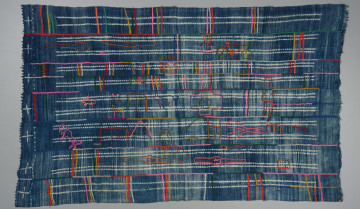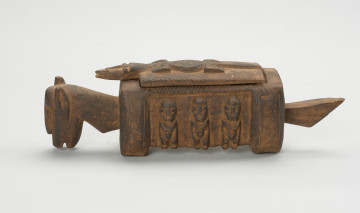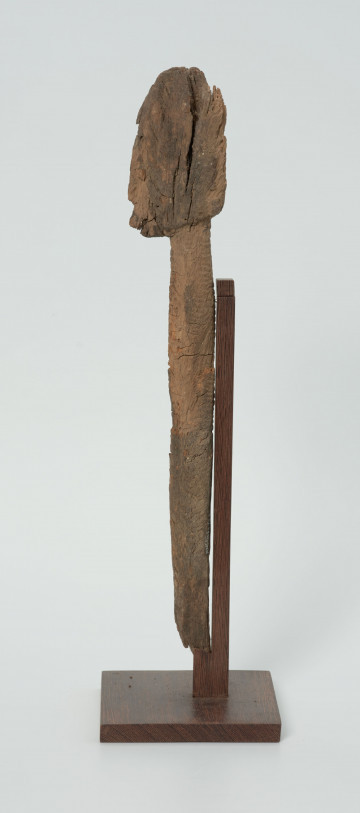
Skirt
między 1951 — 2000
National Museum in Szczecin
Part of the collection: Collection of Dogonian art
The cotton skirt is an element of women's clothing. It is a rectangular fabric which a Dogon woman wraps around her hips and sometimes, when performing heavy work, is additionally bound at the waist with a leather braided belt.The production of textiles in the region inhabited by the Dogon has a long and rich tradition. The oldest archaeological findings connected with thread spinning (clay spinning stones) come from the Djenne-Djeno and Dia sites, as well as from the caves which are burial places of the Tellem people and date to 800-1100. According to Dogon mythology, the ability to produce thread and weave is owed to Nommo - one of their first mythical ancestors. In the Dogon, women process the cotton, clean it and prepare the yarn, but the weaving is the men’s work. The Dogon use a horizontal 2-needle workshop, on which they obtain long, narrow strips of fabric. A skirt usually consists of 6-8 strips of fabric.After the skirt is sewn together and has the right shape, it is dyed. For this indigo (Indigofera tinctoria) is used, which dyes the fabric dark blue. Dyeing is the domain of women belonging to the dyam caste, i.e. the leather workers’ wives and daughters. Before dipping the fabric into the indigo solution, the women sew its fragments together or tie tight knots (the so-called reservoir technique). Fragments secured in this way retain their white colour and create beautiful small patterns against the blue background. Embroidered patterns on skirts are also characteristic of the Dogon, as they are difficult to find in other neighbouring peoples. It has not yet been established when and from where embroidery appeared in the Dogon country. It is quite expensive to make and the Dogon limit it to festive skirts only.
Ewa Prądzyńska
Author / creator
Dimensions
cały obiekt: height: 110 cm, width: 144 cm
Object type
clothing
Creation time / dating
Creation / finding place
Identification number
Location / status

między 1951 — 2000
National Museum in Szczecin

między 1951 — 2000
National Museum in Szczecin

między 1901 — 1950
National Museum in Szczecin
DISCOVER this TOPIC
Museum of King Jan III's Palace at Wilanów
DISCOVER this PATH
Educational path